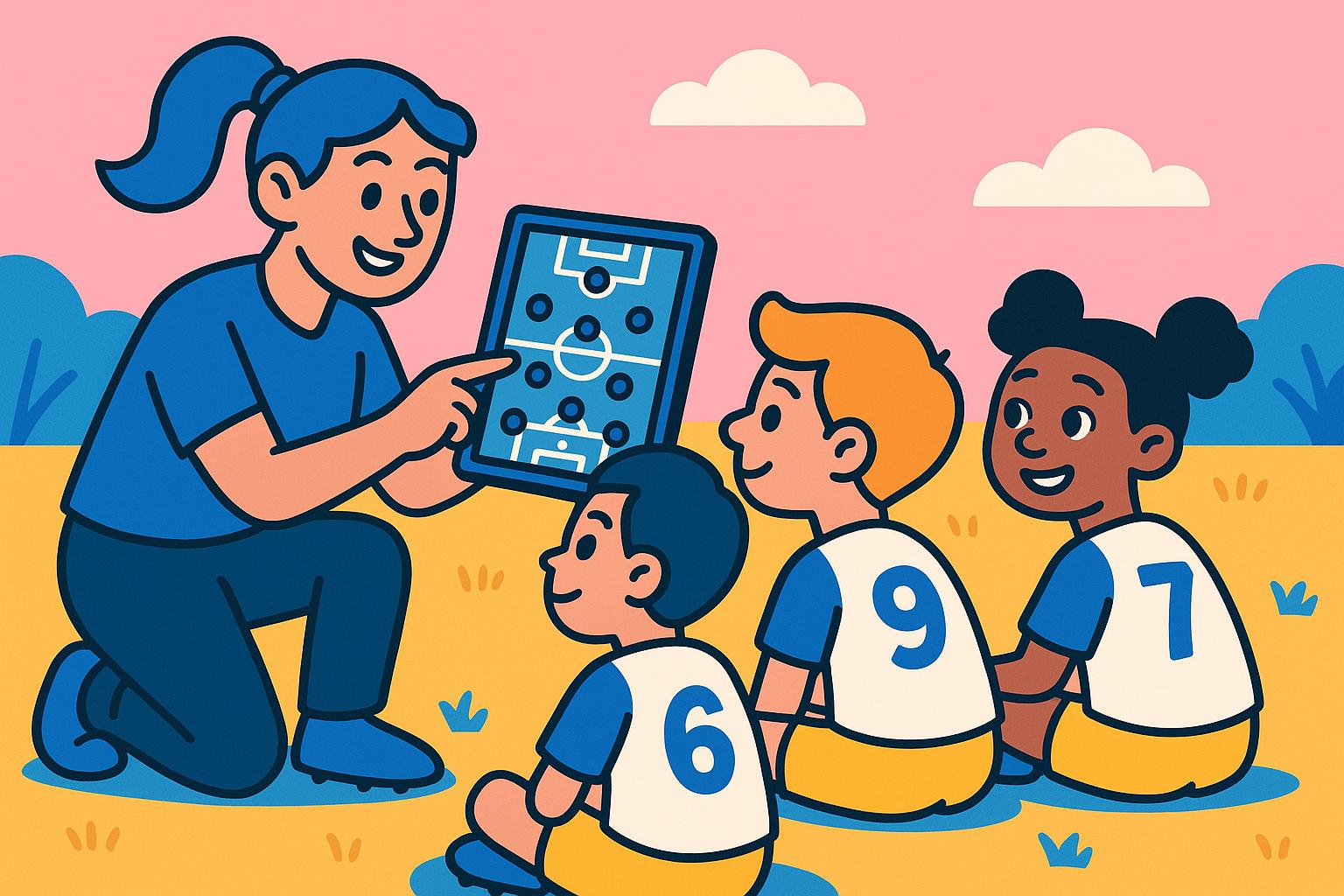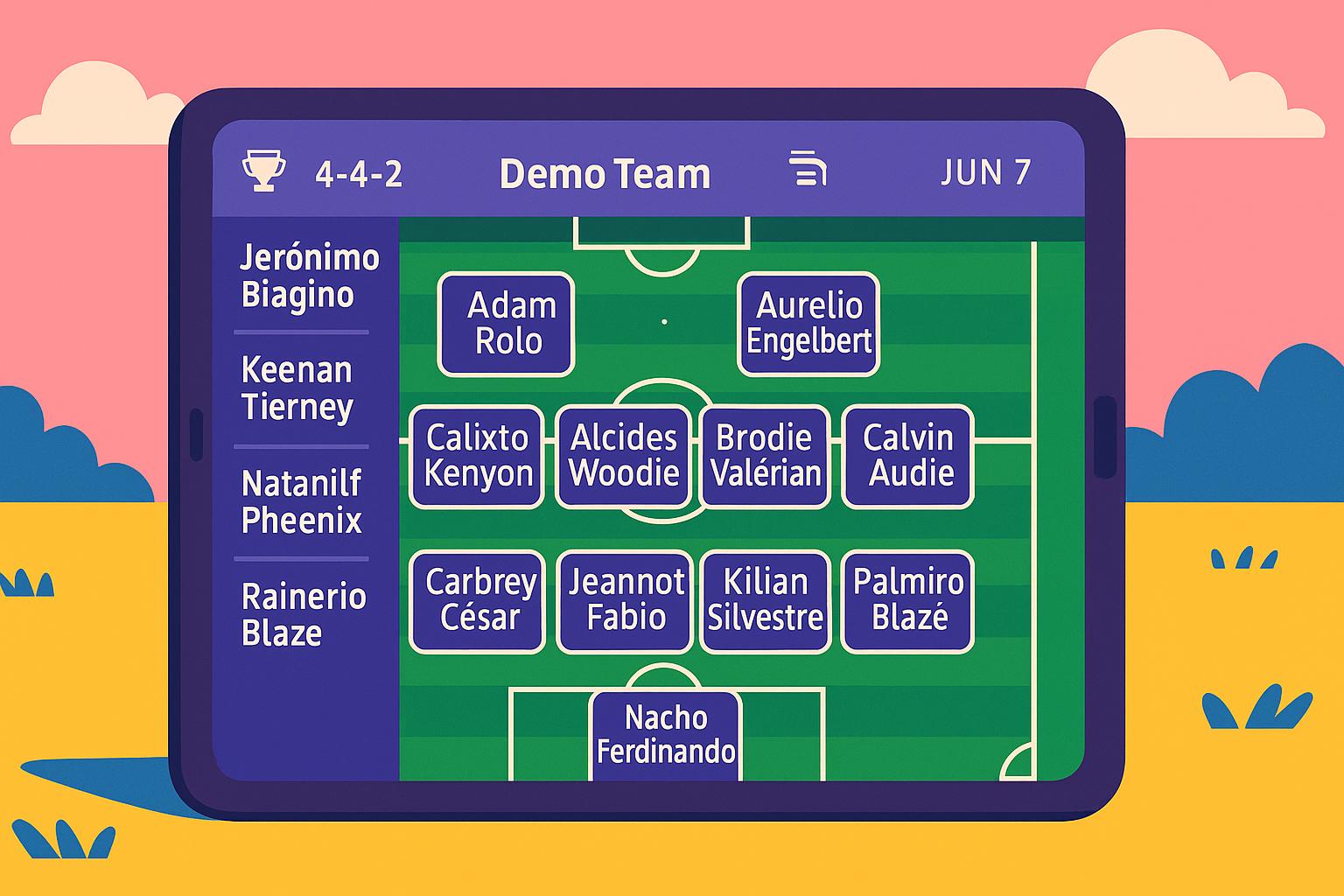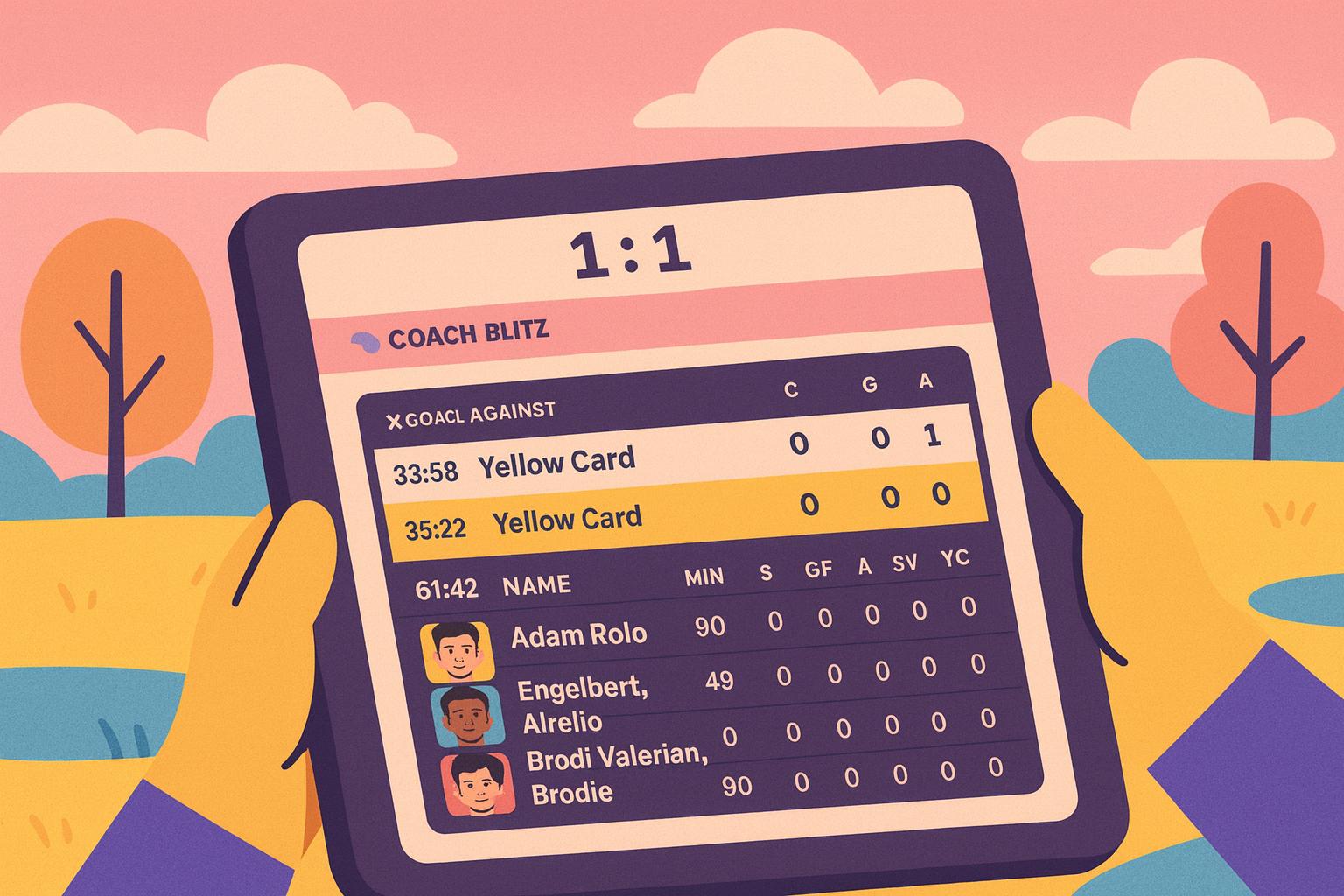
Managing Substitutions Without Stress
Managing substitutions looks simple on paper, but once the game starts, it’s a whole different story. Players on the sideline want to know when they’ll get in. Players on the field start getting tired. Parents are watching for fairness. And on top of that, I need to keep the right mix of skills out there so the team can stay competitive. That’s a lot to juggle, and if I don’t have a plan, it quickly turns into chaos.
What helps me is using Coach Blitz to take care of the moving pieces without ever taking away my role as a coach. I’m still the one making decisions, but the app keeps me organized and gives me confidence that nothing is slipping through the cracks.
Every league has its own setup. Some allow real-time substitutions — like indoor soccer or younger divisions — while others only permit changes between quarters or halves. Before every game, I configure Coach Blitz to match the rules: number of players, length of each period, and the substitution format. Once that’s in place, I know I’m working inside the right framework and can focus on coaching instead of worrying about technicalities.
💬 Coach’s Tip: Always double-check league rules before kickoff. Having the app configured properly saves you headaches in the middle of the game.
I also use the app to track attendance as players arrive. If someone’s late, they don’t automatically get rewarded with a starting spot. That sets the right tone: punctuality matters. By kickoff, I’ve got my starting lineup entered and I’m not scrambling to make last-second choices.
Fair playing time is where things really get tricky. In recreational leagues, balance matters — kids need their chances, and parents notice if it doesn’t happen. But fairness doesn’t mean mass substitutions where half the team comes off at once. I’ve seen how that disrupts rhythm and leaves the wrong mix of players on the field. Instead, I let Coach Blitz track minutes and positions. The app highlights who’s due for more time and who’s already logged plenty. I still make the choices, but I’m making them with accurate information instead of guesswork.

One of my favorite tools is the visual lineup. With a tablet in hand, I can show a player exactly where they’ll step in — left mid, center back, wherever they’re needed. Younger players especially benefit from that clarity. It also creates a natural coaching moment: I can give a quick pointer before they head out, so a substitution becomes more than a swap — it’s a teaching opportunity. And because the lineup is visible, the whole team can see the plan, which builds trust that minutes are being managed fairly.
💬 Coach’s Tip: Use the lineup screen as a teaching aid. Kids step onto the field more confident when they see where they belong and what their role is.
Meanwhile, I don’t have to keep one eye on my watch. Coach Blitz tracks the game clock and reminds me when it’s time to rotate. That frees me up to focus on the players — their effort, their energy, and their growth.
And it doesn’t stop when the game ends. Afterward, I can pull up playing time reports that show exactly how minutes were distributed. Over the course of a season, that adds up to a clear picture: who’s been consistently in the mix, who might need more chances, and which players could benefit from trying different positions. Those insights help me plan better, not just for the next game but for the long-term development of the whole team.

💬 Coach’s Tip: Review the stats after each game. Use them to guide your next lineup and ensure opportunities stay balanced over the season.
In the end, substitutions are about more than rest and rotation. They’re about fairness, development, and keeping the team strong on the field. Without a system, that responsibility can feel overwhelming. With Coach Blitz handling the details, I can coach with confidence — calm, organized, and focused on what really matters: the players and the game.
— The Coach